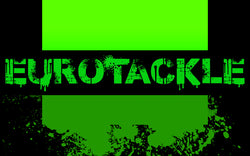
Does Color Really Matter?
With every passing season, new rods, reels, electronics, and accessories hit the market. A quick visit to a local fishing shop – large or small – can prove to be an overwhelming process for even the most experienced anglers. With so many options to choose from, how does one decide?
Every angler has their favorite bait – you know, the one that’s always tied on, the one that gives them the most confidence. For some anglers, that confidence lies in the bait’s profile and for others, it’s related to the action. Color combination gets a lot of emphasis from some anglers, while a number of other fisherman are less concerned.
Despite what certain anglers might think, color does matter at least a little bit. Not in the sense that fish won’t eat something or will eat something simply because of its color, but more in terms of how effectively the lure can be noticed in specific circumstances. Factors like water clarity, weather conditions, and time of day all have an impact on how effective a certain color may be. Options like glow, UV, realistic, or bright and gaudy have scenarios they excel in and scenarios they’re less effective in. In general, there’s some rules of thumb that can help you choose the right bait for the right situation.
Natural Options
For as long as anglers have been fishing, they’ve been creating lures that closely resemble the actual things fish are feeding on. There’s no better example of this than the fly fishermen. As a whole, they spend more time emulating the food that fish are eating than any other angling group. Ice fishermen aren’t all that different.
Over the last several years, options that imitate invertabrates, insects, and minnows have continued to grow in popularity. Take, Eurotackle’s Micro Finesse line of plastics, for example, which has options like the Bloodworm, Anisoptera, Hellgrammite, and Stone Fly. Such lures were developed to meet the size, shape, and color of popular food sources.
Realistic patterned lures are an excellent choice for a number of situations, which is the main reason you hear the term ‘match the hatch’ so frequently in fishing conversations. That being said, they often perform best in situations where fish can see what they’re feeding on. For example, clear water environments or daytime angling. Many fish species feed based on sight, so giving them something that replicates their natural food source is a smart decision. Many of Eurotackle’s hardbaits come standard with realistic paint jobs like Sunfish, Crappie, Threadfin and Dace.

Non-Natural Options
While many non-natural colors share some similarity to natural prey (i.e. orange, chartreuse, etc.), there’s a number of unconventional color patterns that really don’t look like anything. Take Wonderbread, for example. I’s a staple in the tackle industry, but it certainly doesn’t emulate anything natural. These bright, gaudy, and rather unconventional combinations may look rather ridiculous at times, but they can certainly catch their fair share of fish. These choices often get touted for their ability to catch more fishermen than fish. There’s a little bit of truth to that, but in all fairness these options have the situations in which they excel.
Non-natural options can perform well in similar instances to realistic lures, however, their abilities stand out in stained or murky water scenarios. Bright, unique colors add attraction and can aid in calling fish in from a distance.

Glow Options
Glow based lures have long a staple for anglers across the country. Like the name suggests, these lures have the capability of glowing. A simple charge from a light source like a flashlight, or actual glow charger, will allow them to glow for a set period of time. Depending on the lure, finish and light intensity, these lures can glow from anywhere from a few minutes to 30 minutes or more.
Technically speaking, glow lures fall into the category of non-natural lures. However, there’s some key differences that make them stand in a category of their own. While they often come in the same overall color schemes as other non-realistic lures, their ability to glow makes them a better choice for specific situations.
Lowlight conditions, like dusk, dawn, and throughout the night, are where glow options truly shine. When there’s little to no light below the surface, glow-based lures will contrast well against a dark backdrop – making it easy for any aquatic predator to find.

UV Options
UV based lure options are a newer addition to the ice fishing market. They’re often confused with glow lures, as the two terms are used interchangeably (by mistake). That being said, they function in different ways. As mentioned above glow lures require an external light source in order to emit light, whereas UV based options actually reflect ultraviolet light (the key word being ultraviolet).
Similar to glow lures, most UV options share a similar color palette to those in the non-natural category. The differences lie in the science behind the overall finish on the lure. With the ability to reflect light, UV coatings can help lures stand out, especially in specific circumstances. Such options are hardly beneficial in situations involving adequate light (i.e high sun), but can be a difference maker when light is less available. For example, cloudy days and other lowlight conditions.
A piece of advice - rely on the correct lighting source. A number of manufacturers have developed UV flashlights and chargers which can enhance the capabilities of such lures.
Despite what some might argue, lure color matters at least to an extent. Certain sets of conditions call for certain lure color schemes. Knowing which scenarios call for which options, and a level of confidence, can lead to promising results on the water or ice. Thankfully for anglers, Eurotackle has a wide array of hard and soft lures that include natural, non-natural, glow and UV options.

